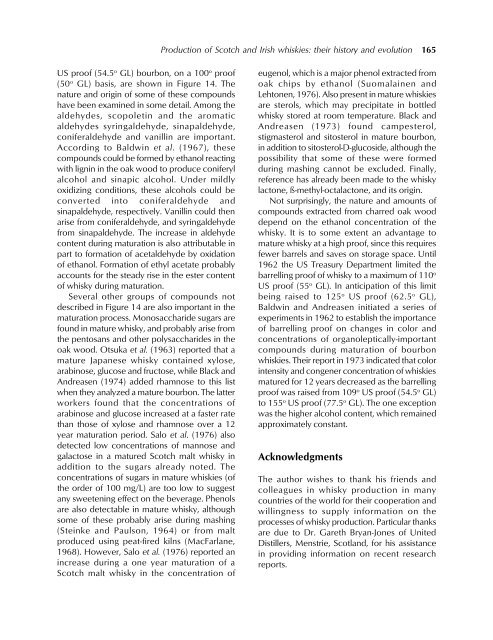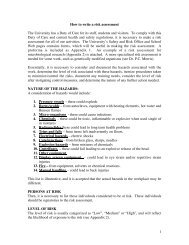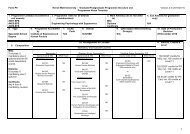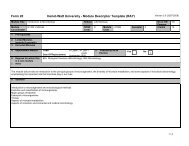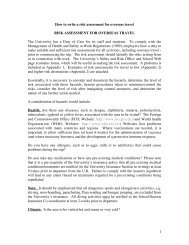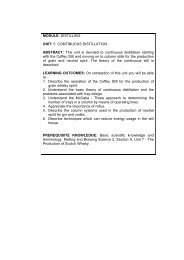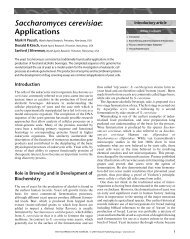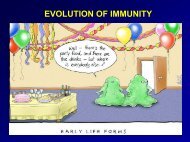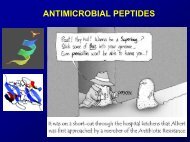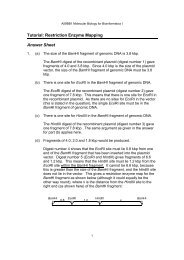Chapter 11 Production of Scotch and Irish whiskies: their history and ...
Chapter 11 Production of Scotch and Irish whiskies: their history and ...
Chapter 11 Production of Scotch and Irish whiskies: their history and ...
You also want an ePaper? Increase the reach of your titles
YUMPU automatically turns print PDFs into web optimized ePapers that Google loves.
<strong>Production</strong> <strong>of</strong> <strong>Scotch</strong> <strong>and</strong> <strong>Irish</strong> <strong>whiskies</strong>: <strong>their</strong> <strong>history</strong> <strong>and</strong> evolution 165US pro<strong>of</strong> (54.5 o GL) bourbon, on a 100 o pro<strong>of</strong>(50 o GL) basis, are shown in Figure 14. Thenature <strong>and</strong> origin <strong>of</strong> some <strong>of</strong> these compoundshave been examined in some detail. Among thealdehydes, scopoletin <strong>and</strong> the aromaticaldehydes syringaldehyde, sinapaldehyde,coniferaldehyde <strong>and</strong> vanillin are important.According to Baldwin et al. (1967), thesecompounds could be formed by ethanol reactingwith lignin in the oak wood to produce coniferylalcohol <strong>and</strong> sinapic alcohol. Under mildlyoxidizing conditions, these alcohols could beconverted into coniferaldehyde <strong>and</strong>sinapaldehyde, respectively. Vanillin could thenarise from coniferaldehyde, <strong>and</strong> syringaldehydefrom sinapaldehyde. The increase in aldehydecontent during maturation is also attributable inpart to formation <strong>of</strong> acetaldehyde by oxidation<strong>of</strong> ethanol. Formation <strong>of</strong> ethyl acetate probablyaccounts for the steady rise in the ester content<strong>of</strong> whisky during maturation.Several other groups <strong>of</strong> compounds notdescribed in Figure 14 are also important in thematuration process. Monosaccharide sugars arefound in mature whisky, <strong>and</strong> probably arise fromthe pentosans <strong>and</strong> other polysaccharides in theoak wood. Otsuka et al. (1963) reported that amature Japanese whisky contained xylose,arabinose, glucose <strong>and</strong> fructose, while Black <strong>and</strong>Andreasen (1974) added rhamnose to this listwhen they analyzed a mature bourbon. The latterworkers found that the concentrations <strong>of</strong>arabinose <strong>and</strong> glucose increased at a faster ratethan those <strong>of</strong> xylose <strong>and</strong> rhamnose over a 12year maturation period. Salo et al. (1976) alsodetected low concentrations <strong>of</strong> mannose <strong>and</strong>galactose in a matured <strong>Scotch</strong> malt whisky inaddition to the sugars already noted. Theconcentrations <strong>of</strong> sugars in mature <strong>whiskies</strong> (<strong>of</strong>the order <strong>of</strong> 100 mg/L) are too low to suggestany sweetening effect on the beverage. Phenolsare also detectable in mature whisky, althoughsome <strong>of</strong> these probably arise during mashing(Steinke <strong>and</strong> Paulson, 1964) or from maltproduced using peat-fired kilns (MacFarlane,1968). However, Salo et al. (1976) reported anincrease during a one year maturation <strong>of</strong> a<strong>Scotch</strong> malt whisky in the concentration <strong>of</strong>eugenol, which is a major phenol extracted fromoak chips by ethanol (Suomalainen <strong>and</strong>Lehtonen, 1976). Also present in mature <strong>whiskies</strong>are sterols, which may precipitate in bottledwhisky stored at room temperature. Black <strong>and</strong>Andreasen (1973) found campesterol,stigmasterol <strong>and</strong> sitosterol in mature bourbon,in addition to sitosterol-D-glucoside, although thepossibility that some <strong>of</strong> these were formedduring mashing cannot be excluded. Finally,reference has already been made to the whiskylactone, ß-methyl-octalactone, <strong>and</strong> its origin.Not surprisingly, the nature <strong>and</strong> amounts <strong>of</strong>compounds extracted from charred oak wooddepend on the ethanol concentration <strong>of</strong> thewhisky. It is to some extent an advantage tomature whisky at a high pro<strong>of</strong>, since this requiresfewer barrels <strong>and</strong> saves on storage space. Until1962 the US Treasury Department limited thebarrelling pro<strong>of</strong> <strong>of</strong> whisky to a maximum <strong>of</strong> <strong>11</strong>0 oUS pro<strong>of</strong> (55 o GL). In anticipation <strong>of</strong> this limitbeing raised to 125 o US pro<strong>of</strong> (62.5 o GL),Baldwin <strong>and</strong> Andreasen initiated a series <strong>of</strong>experiments in 1962 to establish the importance<strong>of</strong> barrelling pro<strong>of</strong> on changes in color <strong>and</strong>concentrations <strong>of</strong> organoleptically-importantcompounds during maturation <strong>of</strong> bourbon<strong>whiskies</strong>. Their report in 1973 indicated that colorintensity <strong>and</strong> congener concentration <strong>of</strong> <strong>whiskies</strong>matured for 12 years decreased as the barrellingpro<strong>of</strong> was raised from 109 o US pro<strong>of</strong> (54.5 o GL)to 155 o US pro<strong>of</strong> (77.5 o GL). The one exceptionwas the higher alcohol content, which remainedapproximately constant.AcknowledgmentsThe author wishes to thank his friends <strong>and</strong>colleagues in whisky production in manycountries <strong>of</strong> the world for <strong>their</strong> cooperation <strong>and</strong>willingness to supply information on theprocesses <strong>of</strong> whisky production. Particular thanksare due to Dr. Gareth Bryan-Jones <strong>of</strong> UnitedDistillers, Menstrie, Scotl<strong>and</strong>, for his assistancein providing information on recent researchreports.


